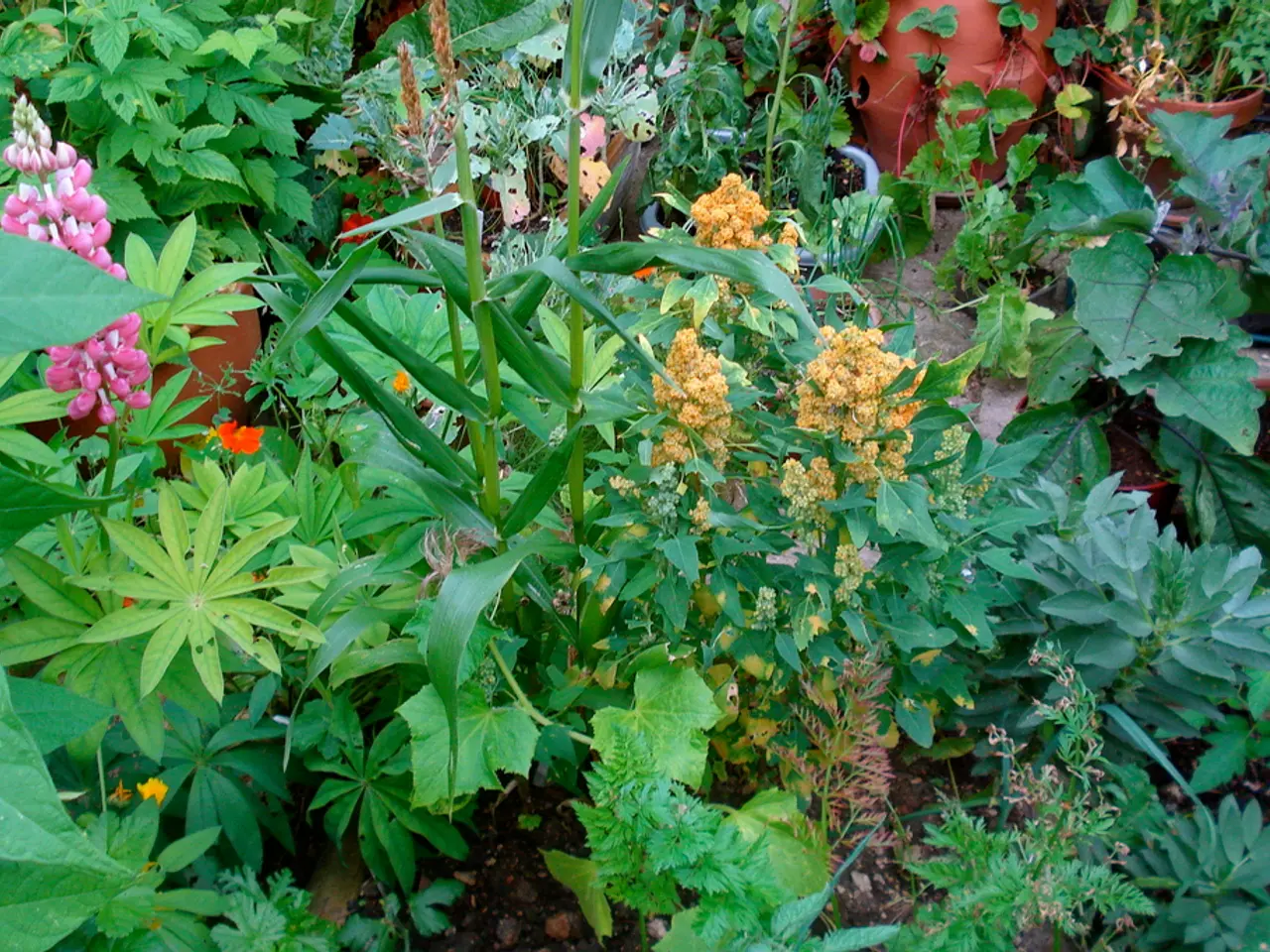Guide for Creating a Productive Kitchen Garden Layout
Creating a Charming Potager Garden: A Kitchen Garden of Function and Beauty
A potager garden, a delightful blend of edible and ornamental plants, is a charming addition to any backyard or garden. This decorative kitchen garden, characterized by its combination of vegetables, herbs, and edible flowers, offers both productivity and aesthetic appeal.
Key Features of a Potager Garden
Potager gardens are marked by their mixed plantings, where vegetables, fruits, herbs, and flowers are artfully arranged, creating a vibrant and colorful space. The structured layout often incorporates raised beds, square-foot gardening, geometric beds, or formal lines to organize plants efficiently while maintaining beauty.
The potager garden serves as more than just a food production area; it also functions as a space for culinary use and garden enjoyment, seamlessly blending utility and design. The garden is designed to offer seasonal interest and a continuous harvest, with a variety of plants ensuring ongoing blooms and edibles throughout growing seasons.
In addition, potager gardens incorporate garden structures like trellises for vertical growing, greenhouses, pathways, and sometimes water features to enhance biodiversity and sensory appeal. They are also wildlife-friendly, encouraging companion planting and often adding features like ponds to support local ecosystems.
Benefits of a Potager Garden
The potager garden offers several benefits, including efficient space use, enhanced aesthetics, ease of harvesting, year-round interest, and the creation of a meaningful outdoor living space.
By combining edible and ornamental plants, potager gardens maximize garden output without sacrificing beauty. The garden's design offers a tapestry of colors, textures, and forms, making practical gardening visually engaging.
The well-planned layouts and vertical gardening techniques allow for convenient, eye-level access to crops, reducing labor and improving productivity. This dynamic space delights visually and gastronomically throughout seasons, creating a year-round interest.
Potager gardens invite more time spent outdoors, fostering a connection to food origins and nature.
Designing Your Potager Garden
Interconnecting paths in a potager garden should be made of paving, stone, gravel, or stone chippings on a weed-proof membrane to ensure accessibility in all weathers. Companion planting is a sustainable gardening technique used in potager gardens, where flowers that attract pollinating or pest-eating insects or repel pests and diseases are grown alongside edible crops.
Strawberries are small and fit in almost anywhere, making them suitable for potager gardens. Blueberry bushes, though needing acid soil, can be grown in large tubs if the soil doesn't suit. Tree, currant, and berry fruits work well in potager gardens and can be trained into various shapes such as step-over espaliers, fan, cordon, or taller espaliers for frames or boundaries.
Miniature hedges or hedge-like edging plants are a classic element of potager gardening style, with plants like catmint, dwarf lavender, hyssop, wall germander, or bushy thyme being suitable options. Boundaries for potager gardens can be created using various options such as formal clipped hedges, frameworks for climbing edibles, rustic wattle hurdles, picket fences, or trained fruit trees.
Upright features like obelisks, archways, frameworks, or pergolas can be used to create more growing space for climbing plants.
In summary, a potager is a kitchen garden designed for both function and beauty, emphasizing diverse, organized planting schemes that produce food and enhance garden ambiance simultaneously.
Incorporating raised beds and structure-based designs, such as geometric beds or formal lines, is a common approach in potager gardens, enhancing both space utilization and aesthetics. This diverse garden style includes companion planting with flowers that attract beneficial insects or repel pests and diseases, making it a sustainable solution for abundant harvests.
Potager gardens are not only productive but also visually appealing due to their incorporation of various home-and-garden design ideas, resulting in a tapestry of colors, textures, and forms that make practical gardening a delightful experience. Strategic planning and layouts for vertical gardening ensure easy access to crops, reducing labor and improving productivity while maintaining beauty.
Furthermore, a well-designed potager garden can serve as a lovely outdoor living area, fostering a connection to nature and food origins, and offering an inviting space for lifestyle and leisure activities, making it a meaningful addition to any home-and-garden.




